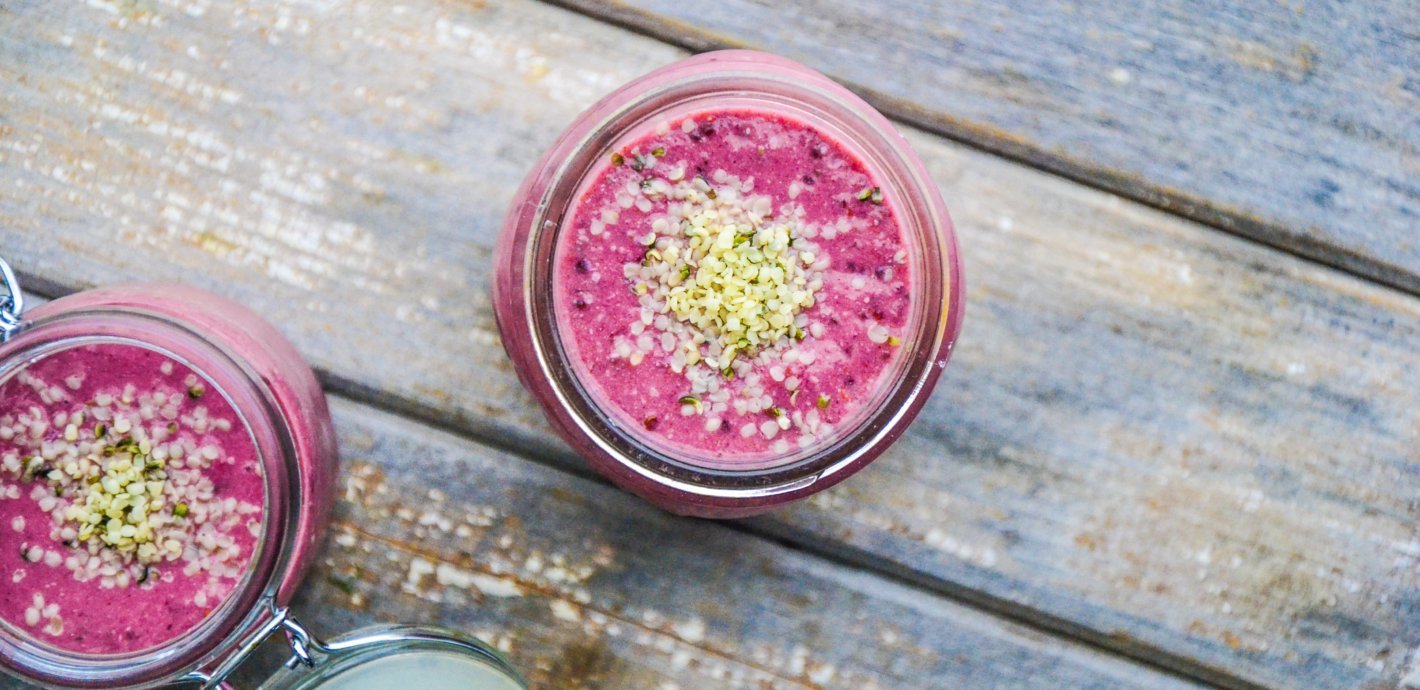Protein shakes were never on people’s radar, except for bodybuilders and others aiming to gain muscle. But in recent years, more of us have started consuming protein supplements, not only after workouts, but also outside the gym. In addition to helping build strength and size, protein may aid in weight loss. A new review from Purdue University found that if your goal is weight control, you may want to consume your protein shake with a meal rather than by itself in between meals.
Researchers looked at 34 randomized controlled trials in which adults consumed protein supplements with meals or between meals. They found that either protein timing increased lean mass, which helps protect your bones and maintain your metabolism. Those who had their shake with food experienced a decrease in fat mass, while the groups that consumed protein between meals gained weight.
The study authors believe that when you have a protein supplement with a meal, you may be more likely to adjust your meal to compensate for the calories in your shake. Whereas, if you have a protein supplement after the gym or as a snack, you may still eat full meals and wind up consuming more total calories for the day. If you’re trying to lose weight, that, of course, will only hurt your efforts.
While protein supplements were not compared in these studies, you have a plethora of rich sources to choose from: whey, casein, egg, nut, etc. With so many options available, it’s important to shop smartly. That means considering plant-based proteins, too. No single type of protein has been found to be superior when it comes to weight loss, however, pea protein has become increasingly popular because, according to some, it’s gentler than others on the digestive system.
Related: You May Want to Reconsider This Popular Supplement
Look for an organic brand without any added sweeteners, or something benign, like stevia. Straight pea protein is preferable. Avoid fortified protein powders claiming to contain probiotics, additional fiber, vegetable powders, and vitamins and minerals. They’re usually not worth it. You’re better off adding your own fresh vegetables or fruits to get a dose of natural fiber. Also, consider opening a probiotic capsule into your protein smoothie, taking it with your meal, or having it between meals.
When making your protein supplement, keep in mind that you are eating this with a meal. So unless you are replacing your entire meal with this shake, be mindful of your calories, staying around 150 total for the shake alone. It’s easier to do this when you use no or little fruit, mix with water or unsweetened nut milk. For a smoothie, blend with small amounts of healthy fats such as seeds, avocado, and nut butters. Or try the delicious recipe from our resident chef, Amie Valpone.
Raspberry Almond Smoothie
This smoothie is loaded with protein, fiber and healthy fats, which makes it an ideal breakfast or snack anytime of the year. We used fresh raspberries, but you can certainly defrost frozen raspberries and use them as well. This smoothie gets its flavor from the creamy banana and almond butter, plus a touch of natural sweetness from the berries. Serve this smoothie with hemp seeds or slivered almonds as a garnish for an extra crunchy topping!
Ingredients
- 2 cups unsweetened almond milk
- 1 scoop protein powder
- 2 leaves kale, stems removed
- 1 medium very ripe banana, peeled and diced
- 1 cup raspberries, fresh or frozen and defrosted
- 2 tablespoons unsweetened coconut flakes
- 2 tablespoons creamy almond butter
- 1 teaspoon pure vanilla extract
- ice, as needed
- 1 tablespoon hemp seeds, optional garnish
Directions
Combine all ingredients in a high speed blender and puree until smooth. Transfer to a large glass or two small glasses and serve.
Yield
1-2 servingsPhotograph by Amie Valpone








Comments (0)